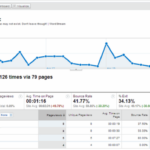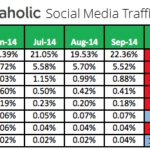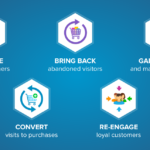Enhancing SEO rankings, generating traffic, and procuring leads are obviously the three primary reasons why any business launches a blog. And while any blog may be better than no blog at all, there’s a major difference between low-producing blogs and those that accomplish the aforementioned objectives. In many cases, the missing link between the former and the latter comes down to two simple words: evergreen content.
The Value of Evergreen Content
What is evergreen content? If you find yourself asking this question, take solace in the fact that you aren’t the only one. Many marketers have failed to grasp the importance of evergreen content and how it fits into a larger content strategy.
In its simplest form, evergreen content is content that stays relevant and useful for years to come. It’s a piece of content that doesn’t lose its value as the months or seasons change. Whereas a blog post about an upcoming event will be irrelevant as soon as the event passes, evergreen content focuses on ideas that will always remain true.
If you’re left wondering whether or not a piece of content is evergreen, follow marketing expert Pamela Vaughan’s advice and use these three criteria:
- This one is pretty self-explanatory. As mentioned, evergreen content should withstand the test of time. Generally, this means holding its value for a minimum of three to five years.
- Evergreen content is generally more valuable. The writing is higher quality and the amount of time that goes into producing the content reflects this. You can’t whip up a piece of evergreen content in half an hour.
- The fact that you’ve spent so much time creating this valuable content should be reflected in the published content. Evergreen content is typically something a business falls back on and proudly touts.
Unless the content you’re currently creating matches up with each of these points, it’s probably not evergreen. This doesn’t mean your content is terrible, it just means the value it produces will be more temporary in nature.
3 Tips for Creating Evergreen Content
“Evergreen content tends to have more meat,” writes marketing consultant Scott McKelvey. “More usable information and practical takeaways that your audience can apply to their lives or businesses, now and in the future. As a result, evergreen content can be shared and reposted on a regular basis.”
How do you create content that embodies these traits? Keep these tips in mind:
- Choose a Variety of Formats
When launching an evergreen content strategy for your blog, one of the first things you’ll have to determine is which formats you’ll use. The best solution is to use a variety until you find out which ones work best with your audience.
Generally speaking, the highest returning evergreen content formats include how-to guides, tutorials, FAQ posts, testimonials, whitepapers, “history of” articles, and other similar pieces.
By taking a diverse approach, you can reel in a bunch of different traffic sources. While you may ultimately determine that certain formats are low-yielding and others are high-returning, you’ll be glad you experimented.
- Think About SEO
While you want to avoid stuffing your content with keywords, evergreen content should certainly be strategically structured around search terms and concepts that your target audience resonates with. Do some research in advance and develop content around these ideas.
Since evergreen content will generate traction for years to come, these articles need to be written in a way that reflects the forward-thinking nature of your business. A failure to plan for SEO is a failure to fully leverage this valuable content.
- Timeless vs. Sustainable
When developing evergreen content, you must make sure you understand the difference between timeless and sustainable. While both have evergreen qualities, the investment they require is different.
Timeless content refers to content that continues to be relevant no matter how much time has passed. An example of a timeless article would be How to Make a Birdhouse. No matter how much time goes by, the information contained in this article will still be valuable for making a birdhouse.
Sustainable content refers to content that has the potential to remain relevant, but will likely require updates and optimization as time goes on. An example of a sustainable article would be The Definitive List of Social Media Websites. Chances are pretty good that social media will still be a thing in five years. However, chances are equally good that the current list of social media sites will be much different than the one in 2021.
Make Evergreen a Priority
As you can clearly see, evergreen content is not only valuable – but it’s also incredibly simple to get started with. By making an effort to focus on evergreen content in 2016, you can expect to see some tangible results within months. It won’t come easy, but it’s certainly one of the highest returning content marketing formats you can utilize.
image credit: marketwired.com (content)











